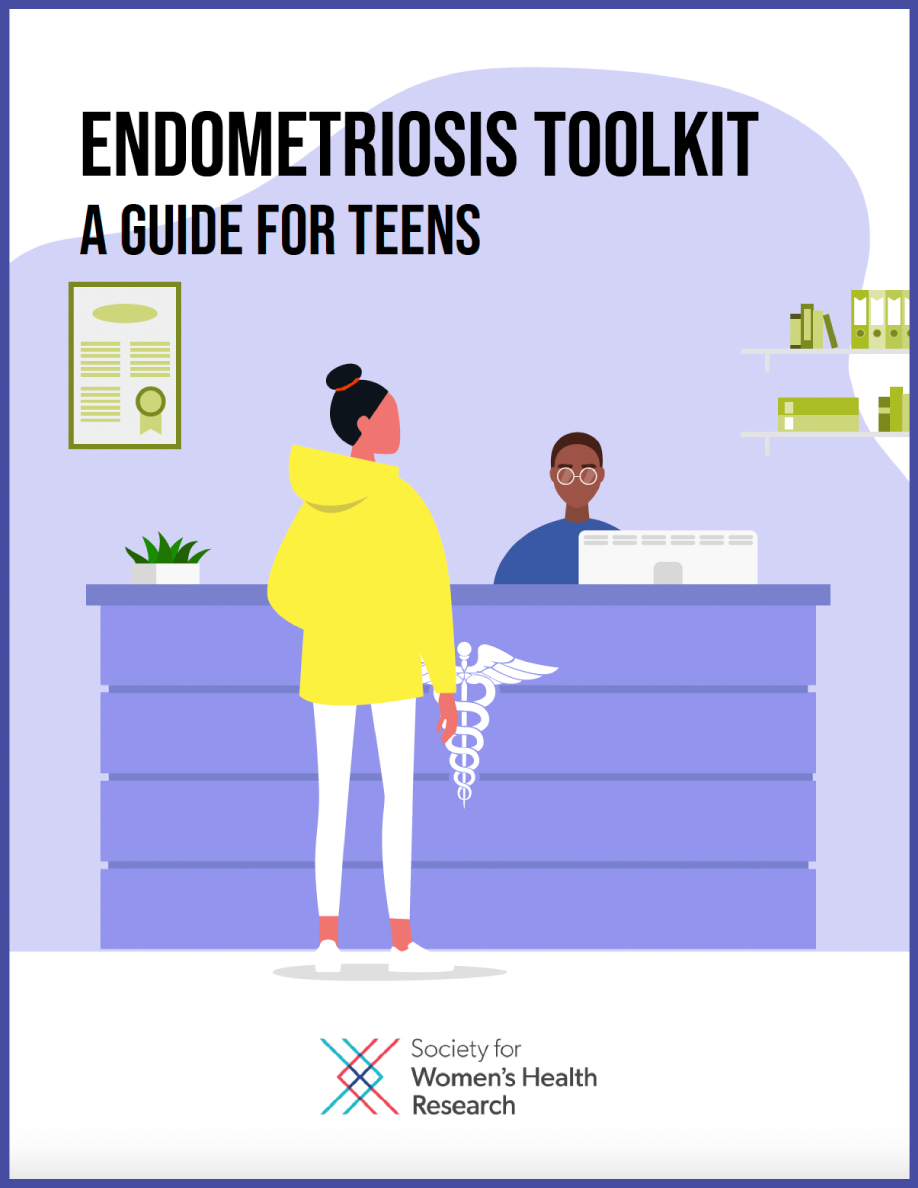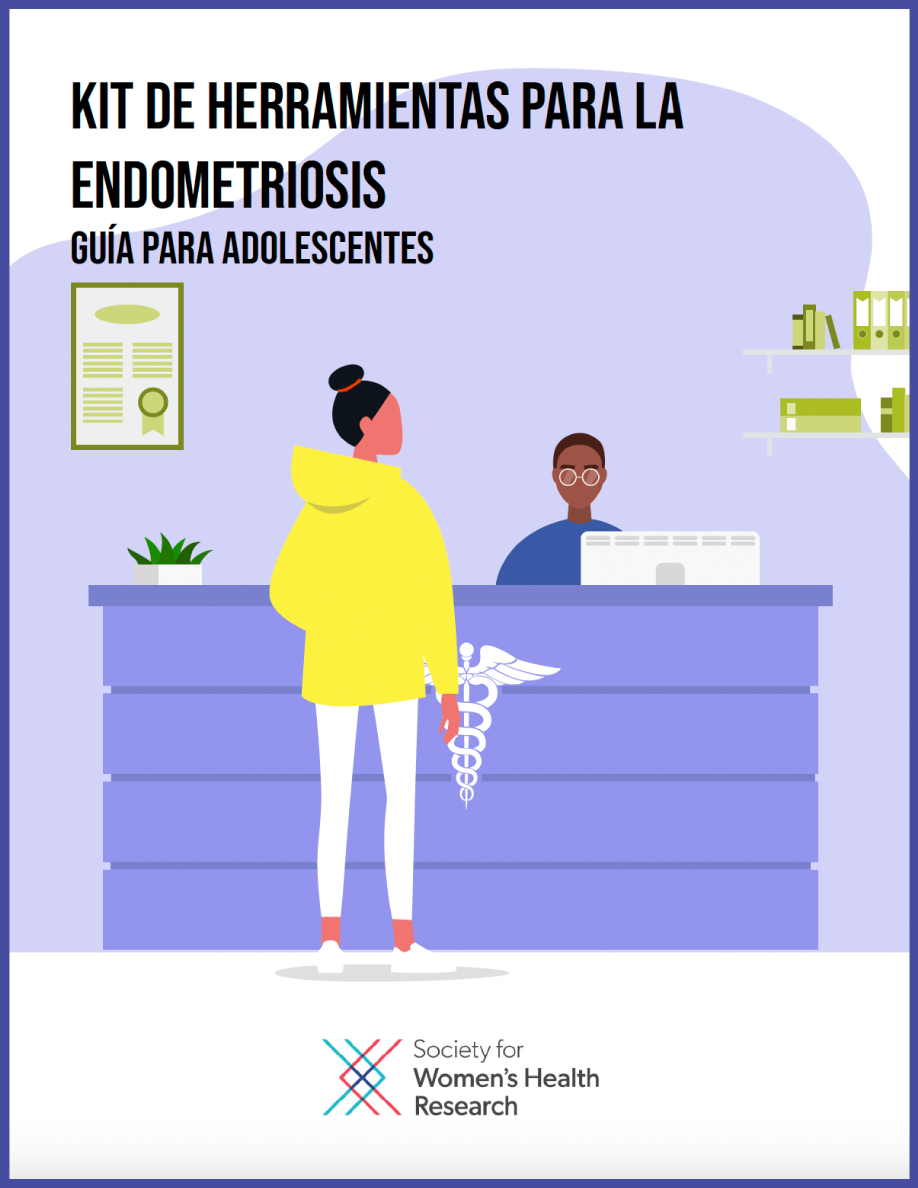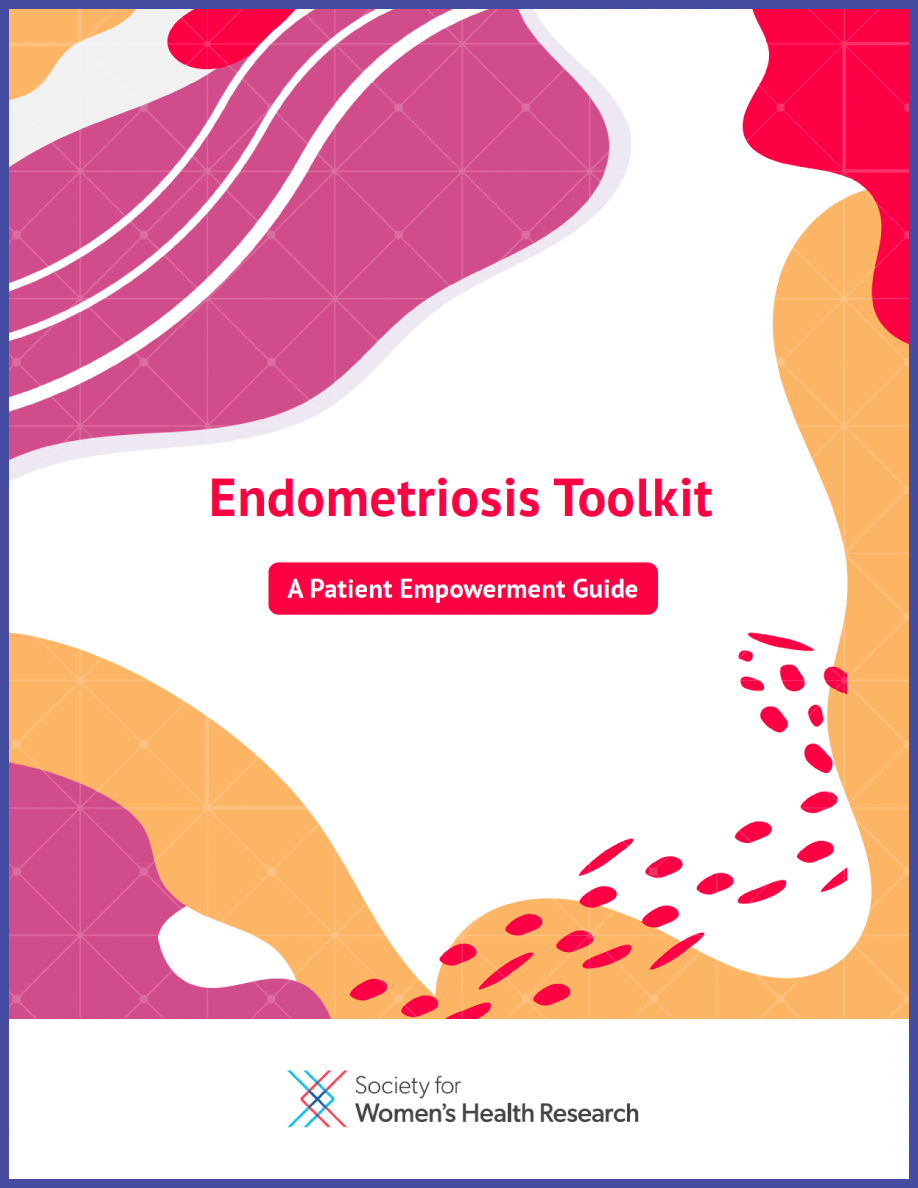Many girls have irregular bleeding and experience unusual pains during the first two years of their period, before their cycles become more regular (happening every 4–5 weeks). However, extremely painful periods are not normal.
If your periods are so painful that you are missing school and social events, or your pain medication isn’t working well, it is important to talk to a trusted adult or a health care provider about your experience.
One potential cause for frequent and severe pain during and between periods is endometriosis—a chronic gynecological disease in which tissue that resembles the lining of the uterus (the endometrium) grows outside the uterus where it does not belong.
The Society for Women’s Health Research (SWHR) created the Endometriosis Toolkit: A Guide For Teens to empower teenagers who have menstrual health questions or are living with endometriosis to better understand their health and navigate their care.
Download Toolkit
¡El Kit de Herramientas para la Endometriosis también está disponible en español!







